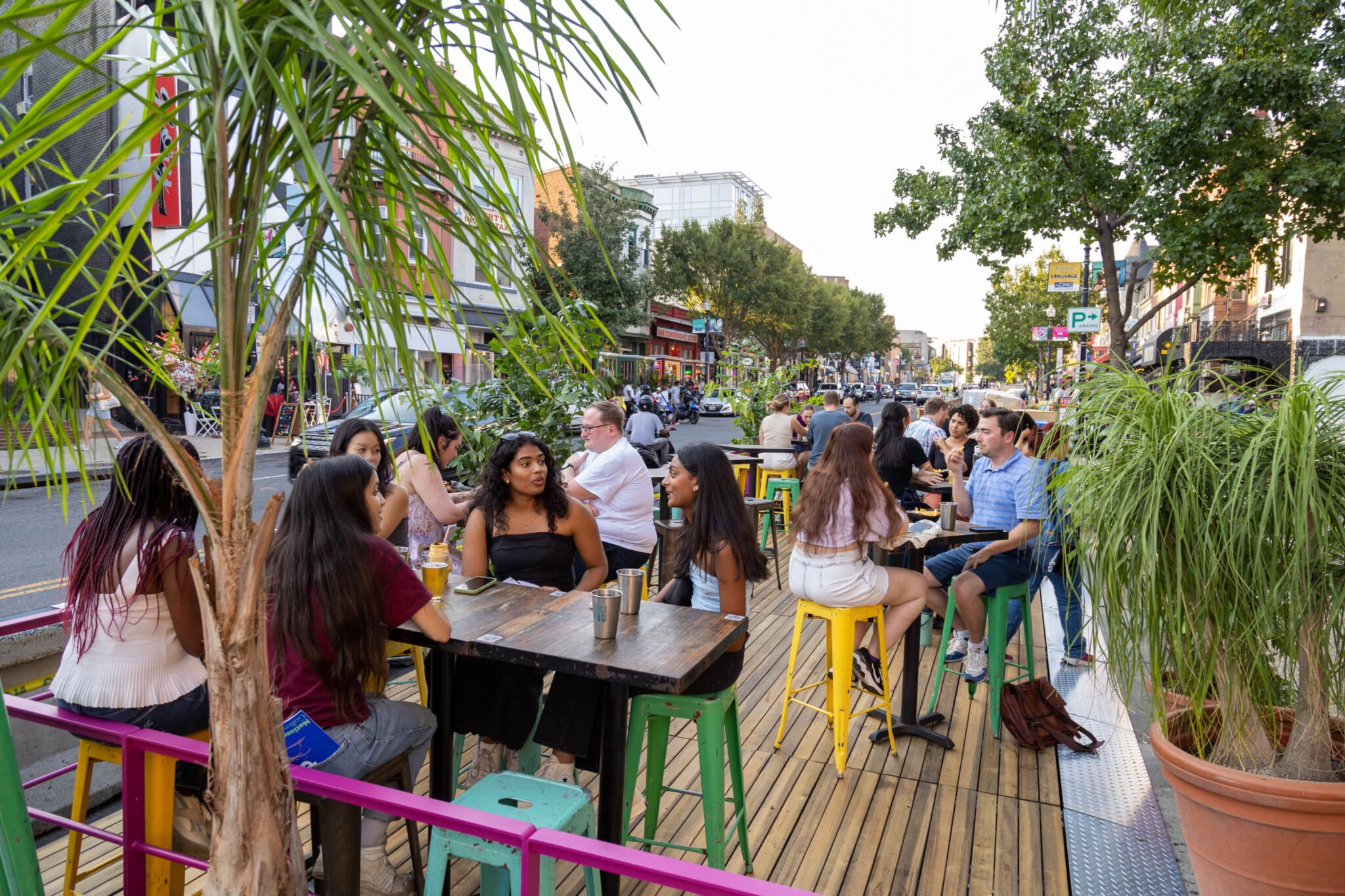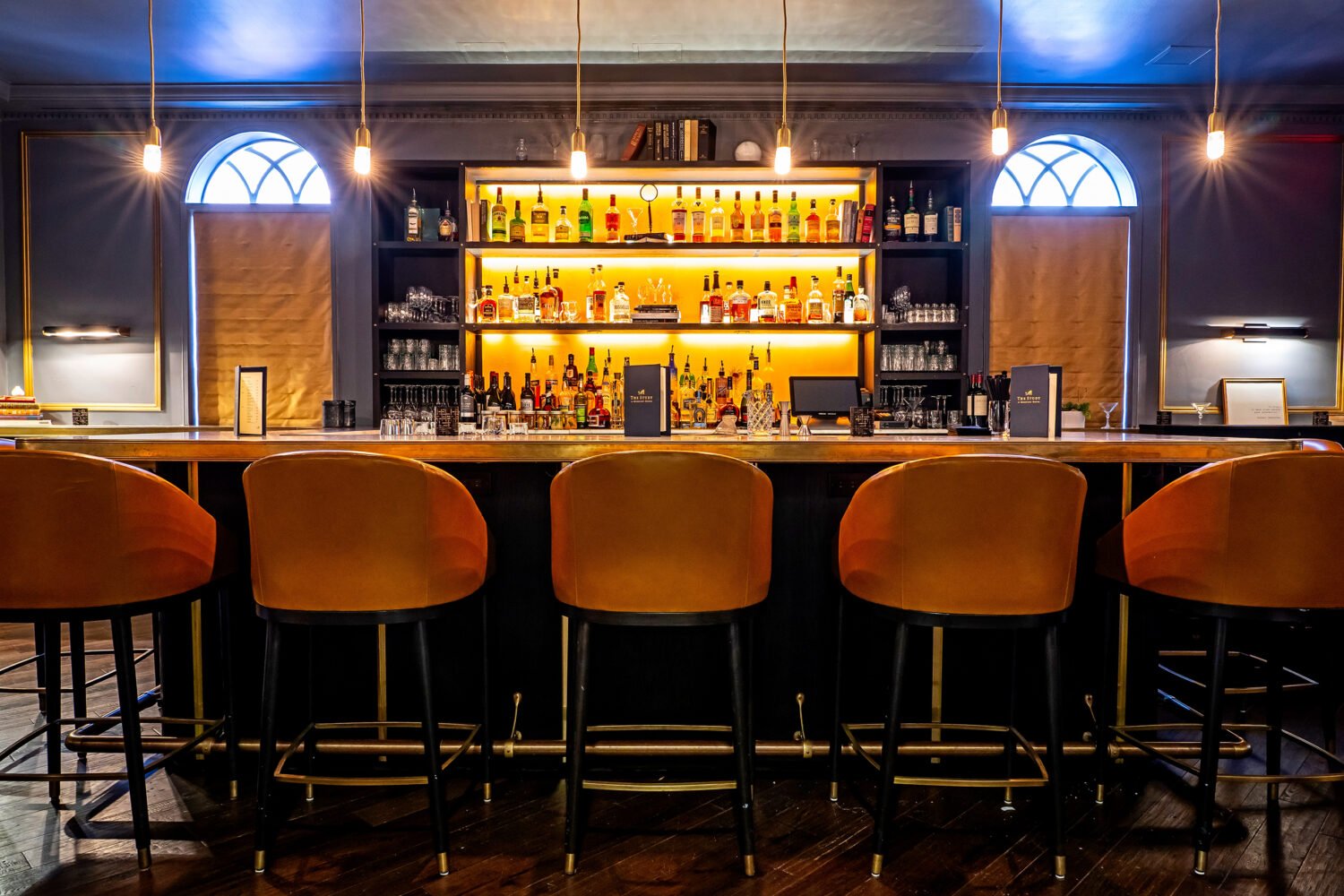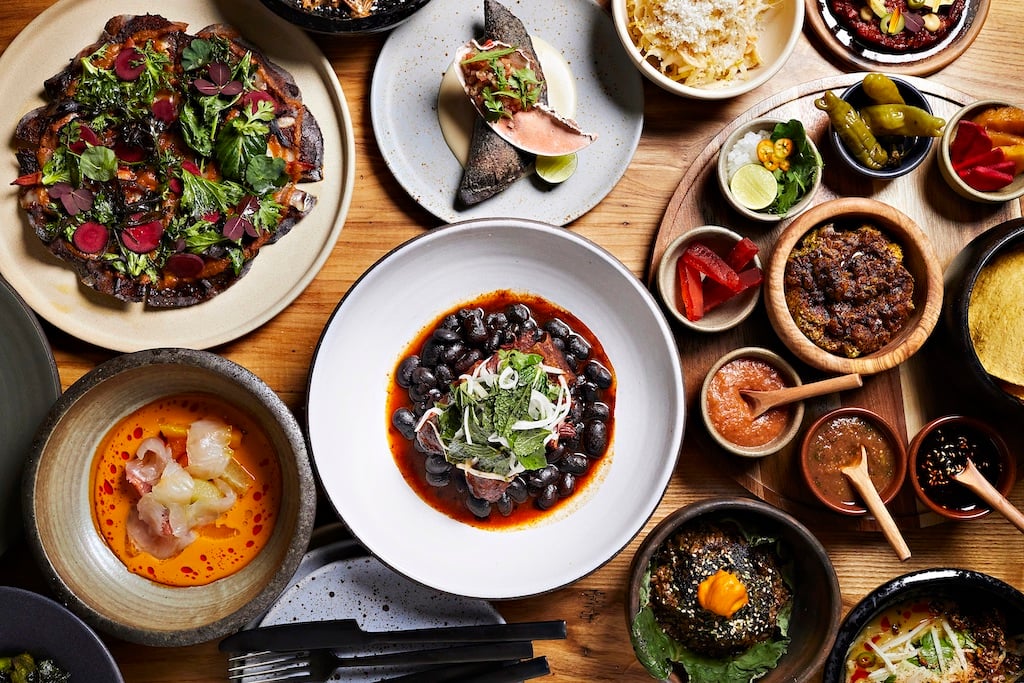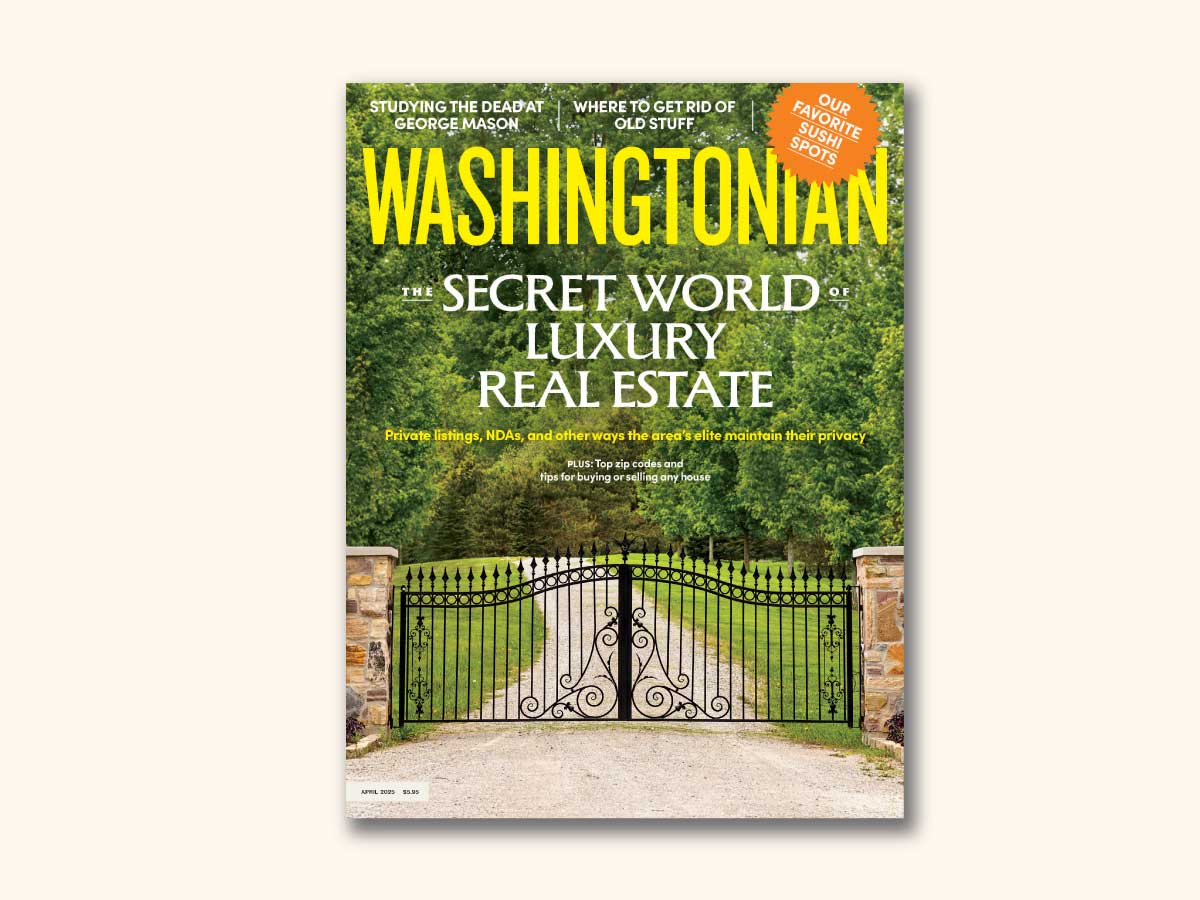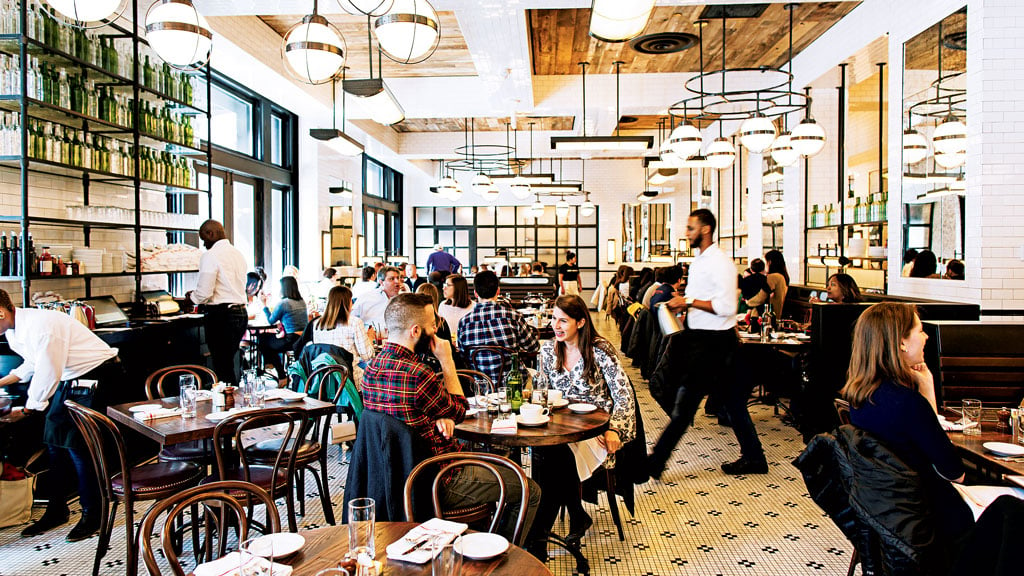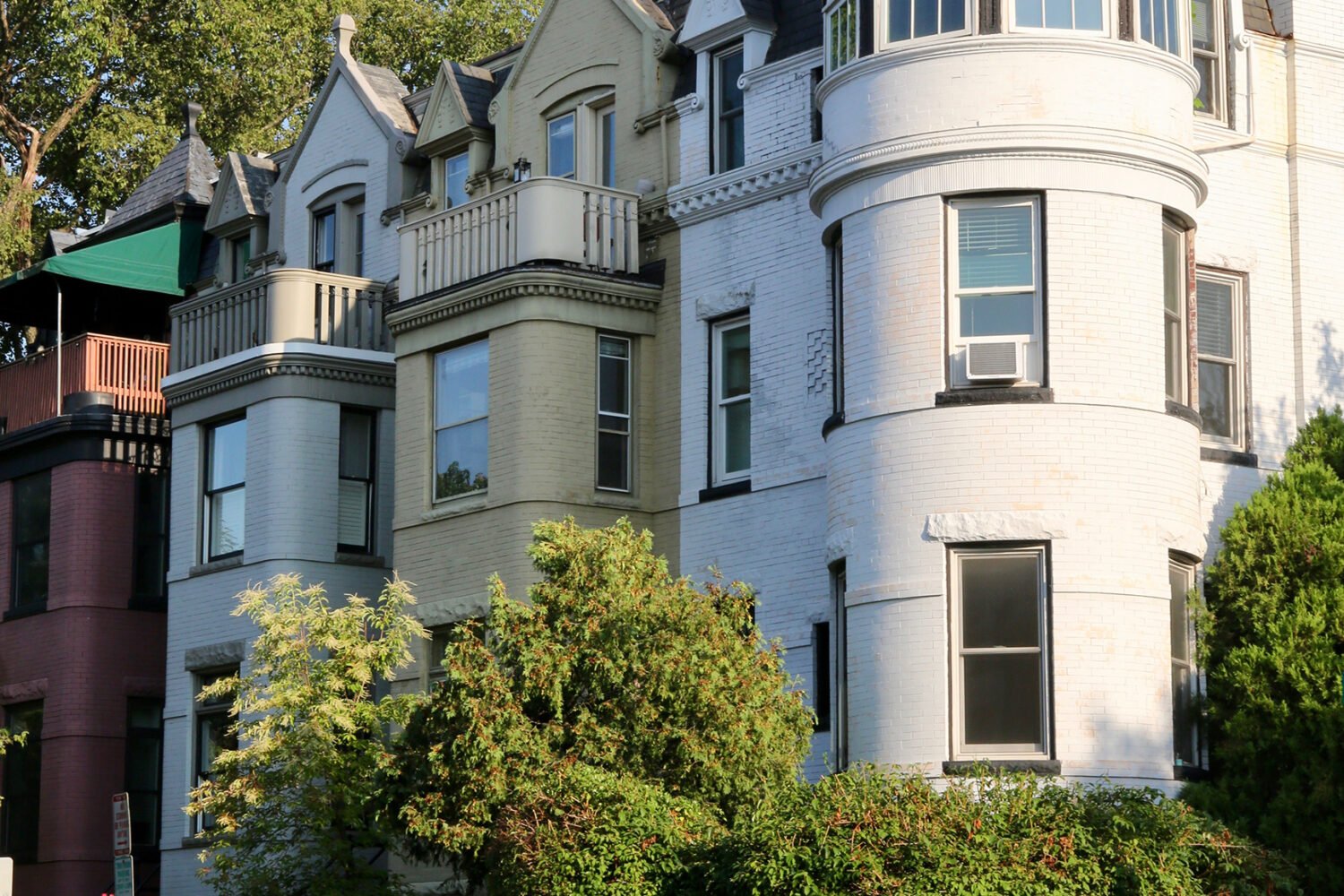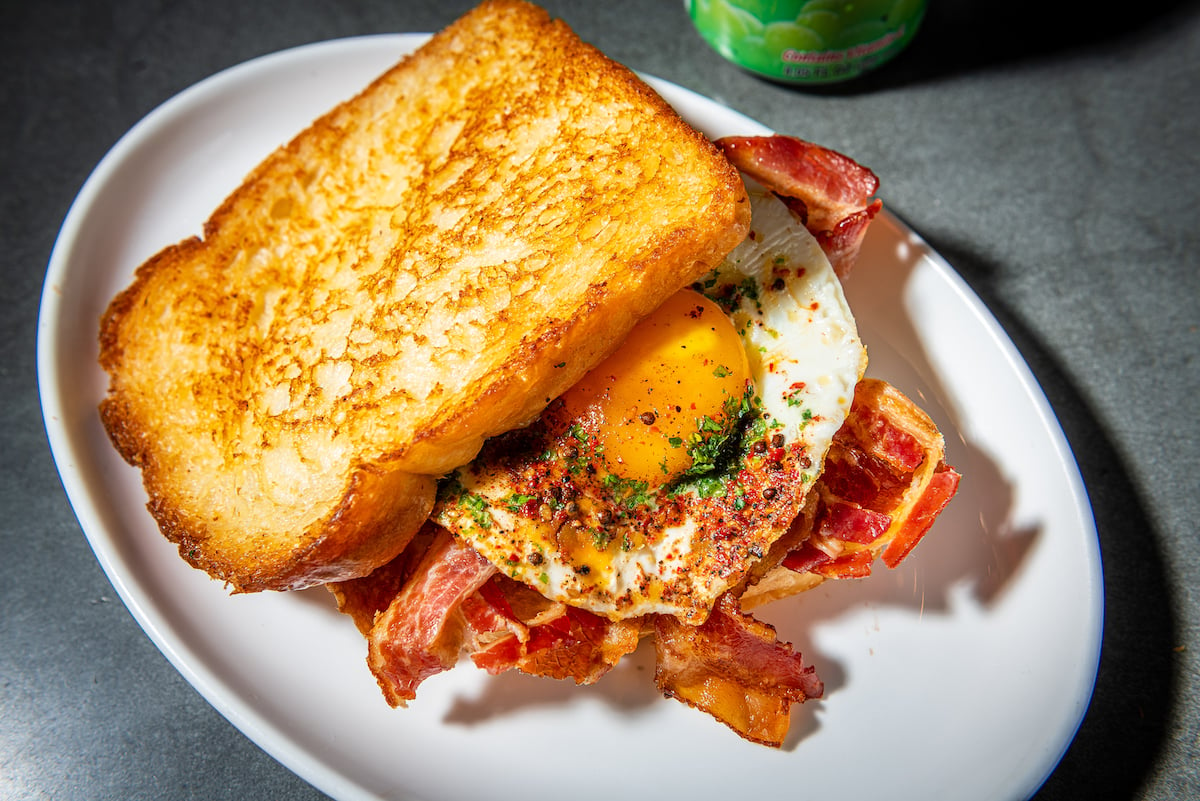The green tarp-covered streatery in front of Rosemary Bistro Cafe doesn’t call much attention to itself—it’s the sort of unlovely but practical structure that popped up all over the city after the pandemic hit. An older-leaning Chevy Chase DC crowd enjoys Covid-safe meals there, while drivers heading downtown on Connecticut Avenue notice the structure only when they suddenly have to merge left to get around it. But in the minds of a few outspoken neighbors, this unremarkable platform’s continued presence is intolerable.
One morning in August, Frederic Darricarrere, the French-born restaurateur who owns the cafe, discovered that his streatery was the subject of a petition calling on the city to remove it as soon as possible. The structure, which has been there since 2020, is legal and has a permit. Yet the petition called for it to be scrapped because it claimed the streatery was hurting other businesses on the block—some of whose owners were behind the petition. Carolyn Papetti, co-owner of the Italian Bar, a cafe next door, explained in an email, “In simple terms, this streatery blocks visibility and hence viability of the Italian Bar.” The petition garnered more than 500 signatures; Darricarrere, meanwhile, started his own petition to show support.
The question of how to handle DC’s streateries has grown more pressing as the pandemic has ebbed: Restaurant owners and some patrons enjoy the benefits of added outdoor tables, while skeptics point to issues such as increased road and sidewalk congestion and perceived unsightliness. Now the city is finally stepping in to resolve situations like the dueling Chevy Chase eateries. A new set of guidelines released in September by the District Department of Transportation—coming after years of deliberation—bans streateries from lanes that would otherwise be used by traffic (rather than purely for parking). Rosemary Bistro Cafe’s structure, which takes up a full lane of Connecticut Avenue, is in clear violation of these new restrictions; it will have to be dismantled by next July. “My plan,” Darricarrere says, “is to follow the rules.”
Under the new guidelines—which DDOT inspectors will begin enforcing next summer—plenty of streateries will still be allowed in DC. In fact, the rules are intended to make the program permanent across the city. But restaurants will have to comply with an updated set of restrictions that govern where streateries can go and what they look like. Owners will also have to pay an annual “public-space rental fee” of $20 per square foot on the structures.
The new requirements bar the kind of enclosed streateries that look more like rustic cabins, with high walls that recreate the indoors rather than providing more of a patio-dining experience. Those structures tend to hide stop signs, crosswalks, and bike lanes from drivers and pedestrians. The new guidelines also correct an accessibility issue: Where many streateries are currently getting away with a ramp from the sidewalk to a street-level dining area, they’ll now have to make the tables flush with the sidewalk on a platform. And DDOT is also putting an end to streateries that have survived in loading zones and in front of bus stops.
The city will hold hearings during which restaurant owners and the public can give feedback on the proposed streatery guidelines, which could still be tweaked. Any restaurant with an existing streatery permit that’s set to expire in December will get an extension until July 2025.
So what will all of this look like in practice? For a preview, all you need to do is head to 18th Street in Adams Morgan. The neighborhood’s main drag was until recently packed with ramshackle dining structures of various heights, colors, and materials—a chaotic assemblage popular with diners but not exactly carefully considered.
Seldom have American commercial streets changed as quickly as they did in the summer of 2020, when cities across the country began allowing ad hoc outdoor dining
In September, city workers tore down all of those temporary streateries—leaving the commercial strip looking oddly denuded—and began replacing them with specially created prototypes that conform to the new rules. The bright, Norwegian-designed structures are made of metal and handsome wood decking, bringing a clean and uniform look to the street. Paid for by DDOT, the Adams Morgan streateries are a gift to 33 bars and restaurants on 18th Street—and a test run for how similar setups could look around town once the new rules fully take hold.
While the new structures are undeniably more attractive, they haven’t brought an end to the debate. Some residents, including restaurant owners, think the city should be moving away from what was originally intended as a temporary response to extraordinary events. Bill Duggan, who owns the Adams Morgan bar Madam’s Organ, thinks they’re ungainly, take up needed parking spots for patrons and delivery vehicles, harbor rats, and hide sidewalks from the view of passing police cars.
Madam’s Organ is one of the 18th Street establishments getting a city-paid new streatery; Duggan says he chose that option rather than the motorcycle and scooter parking area that DDOT had proposed as an alternative. But in general, he sees streateries as more negative than positive. “The biggest thing is that if you go out there at night, you’ll see that most of them are empty,” he says. “I just don’t think that it’s a great look for the city.”
Seldom have American commercial streets changed as quickly as they did in the summer of 2020, when cities across the country began allowing ad hoc outdoor dining for desperate restaurants. Kim Vacca, who was hired onto DDOT’s neighborhood-planning staff in February of that year, quickly found her job transformed. Approving permits for these outdoor structures—a small part of her predecessor’s work—soon became the majority of her job.
That June, three months after Mayor Muriel Bowser issued the initial stay-at-home order, Vacca’s team allowed DC’s first streateries to take over parking spots on 18th Street. They were makeshift and basic at first: indoor tables and chairs hoisted into the street and surrounded by concrete Jersey barriers. The weather was nice, and patrons who felt comfortable dining out were grateful for any opportunity to visit a restaurant, no matter the environs.
But indoor-dining restrictions continued into the winter, then into 2021. Streateries started to become more elaborate and substantial, all with relatively minimal guidance from DDOT. The agency, for example, never made formal rules for winterizing the structures, but restaurants did anyway, enclosing what had been fully outdoor spaces in various ways and even sometimes scoring grants from the mayor’s office for heaters and insulation.
As the pandemic faded and dining returned to some form of normal, a lot of restaurateurs and customers realized they didn’t want the streateries to go away. “What was a necessity became a preference for a lot of people,” says Daisuke Utagawa, who still maintains his setup outside Daikaya and Tonari, two neighboring restaurants he owns in Penn Quarter. “All the attractive cities in the world have streetside seating. It adds something to the value of the city that is hard to calculate.” It also adds value you can calculate—in the form of additional revenue. Darricarrere says his streatery accounts for half his business during warmer months, and other owners also say the extra tables have boosted income.
The streateries initially were authorized for 90 days, but DDOT decided to renew the temporary program, then did so again after the first year. It has continued to be renewed ever since, with some modifications to the rules as the situation changed. The most recent temporary authorization expires at the end of this year; the new rules are meant to be permanent.
A lot of restaurants have ended up scrapping their outdoor structures, in part because of the effort required to operate and maintain them. Today, huge sections of the District—east of the Anacostia River, much of uptown and Petworth, the majority of Northeast DC and upper Northwest—have almost none. That’s why, for example, Rosemary Bistro Cafe’s streatery stands out: There’s nothing else like it nearby, so drivers don’t expect to encounter the thing when it suddenly appears in their lane.
In Georgetown, about half of the pandemic-era streateries have now been torn down. Nonetheless, street dining has proved resilient and popular, and even before DDOT released its new guidelines, the Business Improvement District was working on ways to make the structures more attractive and lasting.
The streateries, built in a hodgepodge of styles that didn’t fit with Georgetown’s historic look, haven’t always been popular in the neighborhood. But they accomplished something significant: Crashes and serious injuries were cut in half in the neighborhood, according to a report commissioned by the Georgetown BID. The theory is that eliminating a lane has slowed traffic overall while making it easier for pedestrians to cross busy M Street and Wisconsin Avenue.
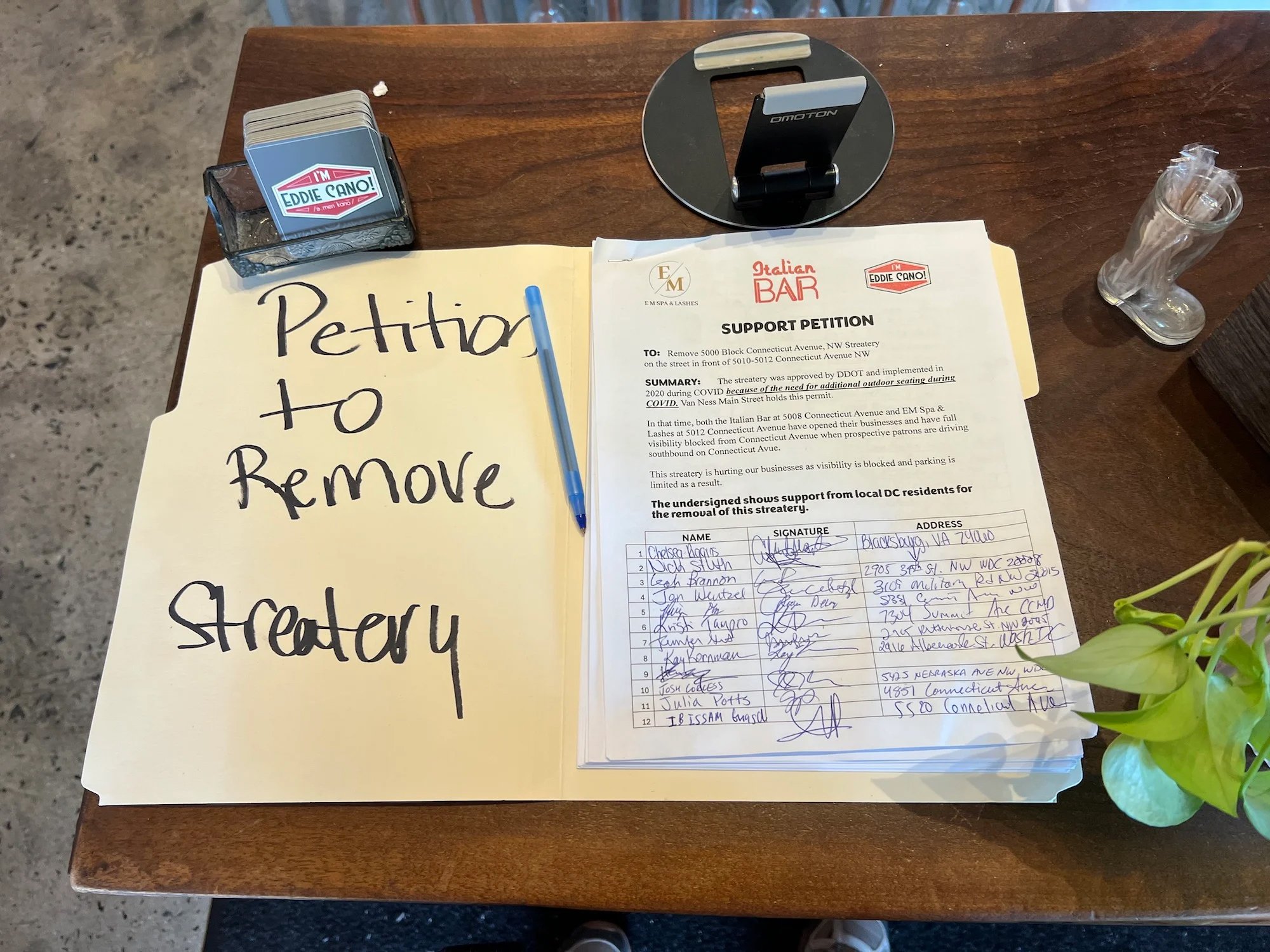
Now the BID is fully behind the idea of making Georgetown’s streateries permanent. “We originally thought that they were a pandemic response, without realizing just how great the benefit would actually be to the neighborhood,” says Faith Broderick, the BID’s economic-development director. “Because we’ve had the streateries out for so long, we’ve been able to monitor their impact. We’ve seen a lot more leasing velocity from restaurants; we’re seeing a lot of foot traffic.”
There can be downsides for restaurant owners, though, especially the expense and effort required to keep up with changing rules. James Wozniuk opened Makan in Columbia Heights on March 8, 2020, a few weeks before the mayor’s stay-at-home order. After holding out for months, Wozniuk paid a contractor around $10,000 to build a wooden streatery. Since 2020, about every six months, Wozniuk has prepared to take the structure down when the temporary program was set to expire, only to hold off when DDOT renewed it.
The upcoming stricter guidelines, Wozniuk says, will probably spell the end of his outdoor setup, which will no longer be up to code. He could tear it down and replace it, but that doesn’t seem worth the effort: “To spend a lot of money to build it, spend a lot of money to destroy it, spend a lot of money to build it back up, and then have to pay rent on it—I’d rather just tear the streatery down and be done with it.”
How many additional restaurateurs will make that same calculation? Other than on that Adams Morgan test stretch, owners will have to pay out of pocket to get their structures up to snuff, and many restaurants are already struggling. DDOT does have $750,000 earmarked to help subsidize the transition. A portion of that will go to a consultant who is available to draft compliant streatery designs for restaurants. Another chunk will likely go toward grants for owners to buy materials. The department hasn’t decided on these exact amounts yet.
But that funding won’t be enough to cover all the work that needs to be done. Many streateries don’t even meet the basic temporary guidelines in place now, let alone the new permanent requirements. “Pretty much all streateries will have to change something,” Vacca says, “whether that is shifting a post an inch or totally demolishing and starting anew.”
This article appears in the November 2024 issue of Washingtonian.

